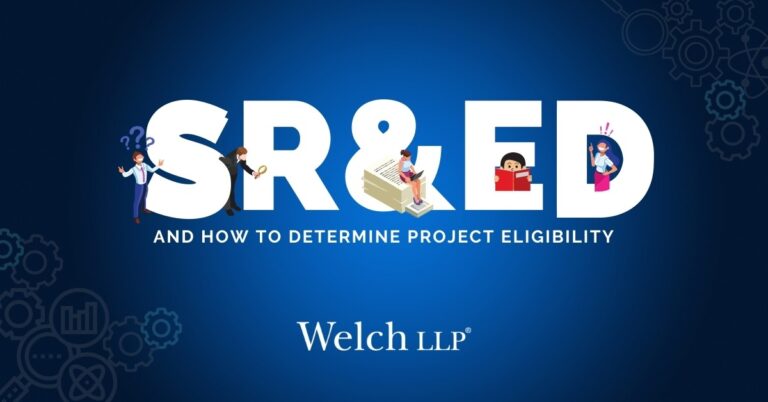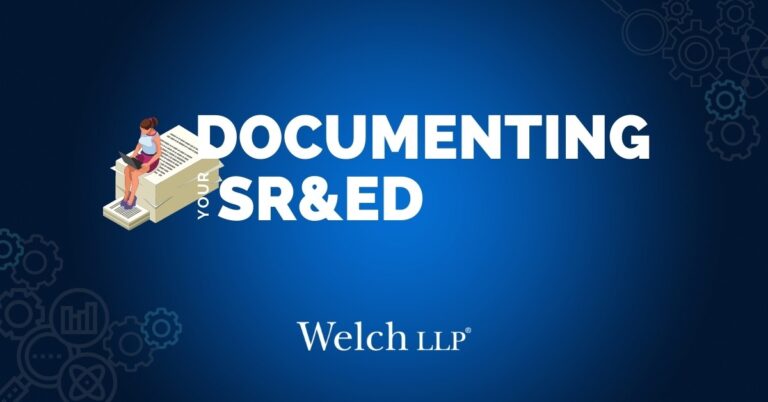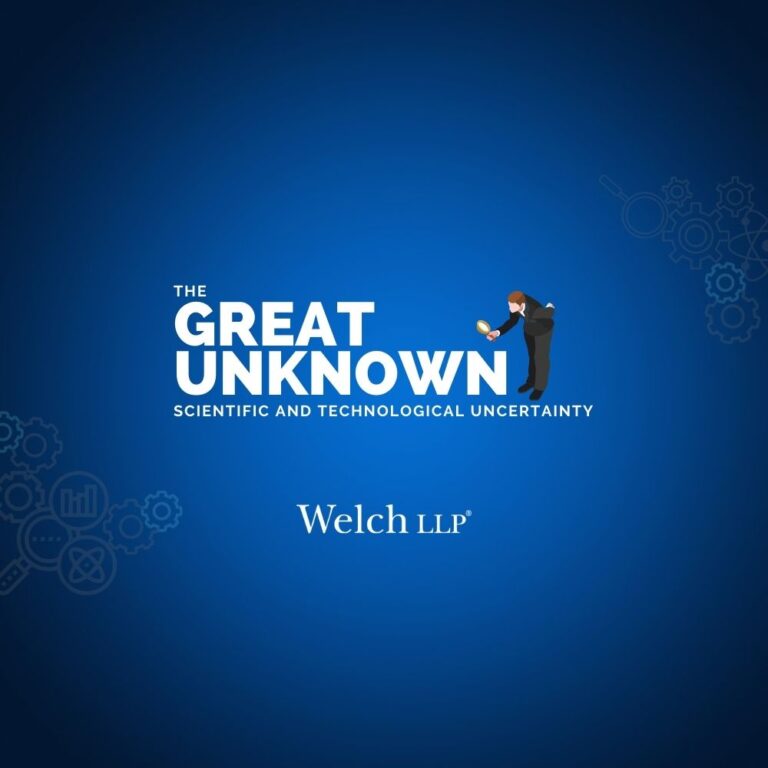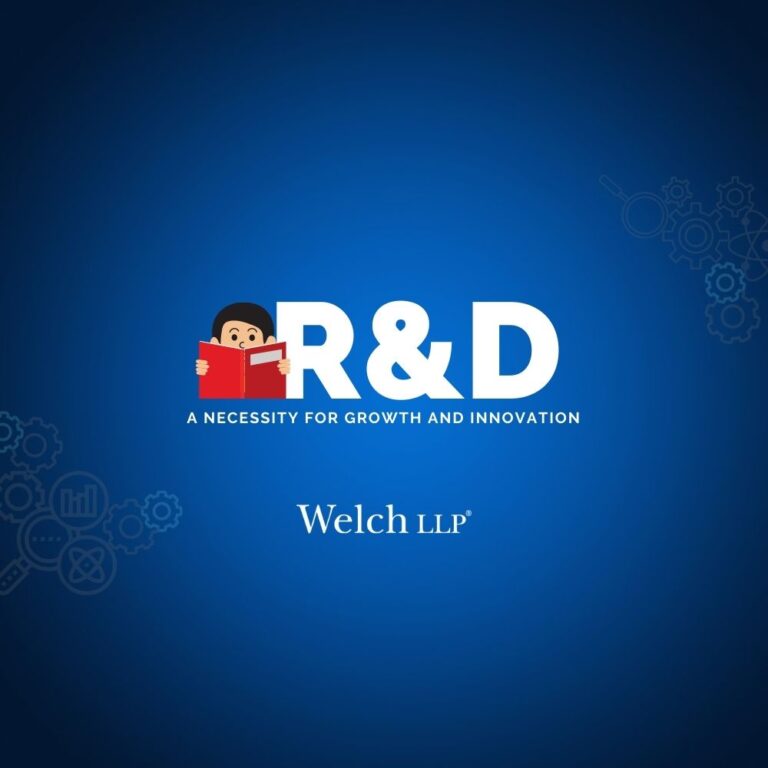In a recent update to the Scientific Research & Experimental Development (SR&ED) guidelines (as of August 13th, 2021), CRA has provided a new set of guidelines to assess the eligibility of SR&ED work. These new criteria attempt to provide a ‘lens’ to view SR&ED through to help simplify the determination on whether or not work classifies as SR&ED. It is important to note that the definition of SR&ED as given in subsection 248(1) of the Income Tax Act, remains the same, and the five questions still remain relevant with regards to an eligibility determination (i.e. eligible work must still satisfy the five questions).
These new guidelines are centered around the specific definition of SR&ED in the Income Tax Act;
“Systematic investigation conducted through experimentation or analysis with the purpose of achieving an advancement in scientific knowledge or technology”
We can see SR&ED work is defined as a systematic investigation conducted through experimentation or analysis with the purpose of achieving an advancement in scientific knowledge or technology.
The CRA has interpreted this definition of SR&ED based on the ‘how’ (i.e. a systematic investigation) and ‘why’ (i.e. for achieving an advancement in scientific knowledge or technology) SR&ED is conducted.
Therefore, in order for work to be eligible, these new guidelines suggest that both the ‘how’ and ‘why’ must be satisfied.
The ‘How’
The ‘how’ requirement recognizes that for work to be eligible, it must be carried out through a systematic investigation or search by means of experimentation or analysis.
Referring to the blog post “The SR&ED Program & How to Determine Project Eligibility Series Part 2”, we know that a systematic investigation consists of the following four components:
- A problem is defined;
- A hypothesis (i.e. a possible solution to the problem) is generated as a starting point for the investigation;
- The hypothesis is tested by experiment or analysis;
- Conclusions are developed based on the results.
The ‘how’ requirement further specifies that a systematic investigation completed for the purposes of SR&ED includes a fifth component, that is:
- Evidence is generated and recorded as work is progressed.
By following these five criteria, you can demonstrate to CRA that a systematic investigation was adopted to solve the problems which arose during your experimental work.
A key component of the ‘how’ criteria is that known design methods, techniques, procedures, protocols, and standards are only investigated and applied as a starting point to the research and do not constitute the research in full. Problems which are solved by established procedures and standards are defined by the CRA as a systematic approach and do not fulfill the ‘how’ requirement. Consequently, a systematic investigation will ensure the development of an idea (which can be based on known facts) through experimentation or analysis and, as a result of testing, this idea will evolve past that which is known in the relevant knowledge-base, thus, satisfying the ‘how’ requirement.
The ‘Why’
The ‘why’ requirement refers to the latter part of the SR&ED definition, that is, that work is conducted for achieving an advancement in scientific knowledge or technology. By this definition, the CRA interprets an advancement as:
“The generation of knowledge that advances the understanding of science or technology”
The CRA requires that this knowledge is conceptual knowledge (i.e. the generation/discovery of theories, prediction models or know-how which can be used to develop new or improved products or processes)and not factual knowledge (i.e. data or measurements). Thus, it is important to describe to the CRA the conceptual knowledge which is created as a result of the research and identify the knowledge gap which exists to ensure the work results in the creation of new knowledge.
To understand this new knowledge, we can refer back to the definition of an uncertainty as discussed in the blog post “The SR&ED Program & How to Determine Project Eligibility Series Part 2”. From this definition we know that an uncertainty exists when you are not sure if your problem can be resolved by the existing knowledge base due to an insufficiency of knowledge. This insufficiency in knowledge can exist when your problem has characteristics such as: interlocking constraints; too many variables or unknowns; the problem is constantly evolving; and/or existing design methods are not applicable.
As a result of this insufficiency, new knowledge is required and the generation of this knowledge can lead to an advancement. Furthermore, this knowledge can be generated regardless of whether or not your work achieved your project objectives, as failures can still lead to the generation of knowledge which advances the understanding of science or technology.
It is important to emphasize that this knowledge is new knowledge, that is, knowledge which is not available within your business (i.e. internal proprietary resources/information) or openly available to the public (i.e. scientific publications, patents etc.). When this knowledge is not available, it suggests that technological knowledge is insufficient and, thus, attempting to resolve your problem through experimentation will result in the generation of new knowledge.
This knowledge can be demonstrated through the development of technology. In certain scenarios you may seek to meet the project objectives through creating new or improved technology. In these situations, experimental development can result in the generation of new technological knowledge. These scenarios arise when there is a need to:
- Generate new technology to meet your project objectives;
- Make improvements to existing technology;
- Use existing technology in a new context to achieve your objectives.
Therefore, if your work attempts to: (1) resolve an uncertainty; (2) advance your conceptual knowledge; (3) address a knowledge insufficiency; and (4) generate new knowledge, the work will satisfy the “why” requirement.
Author:
Nicholas Ogrodnik
[email protected]
Technical Advisor












